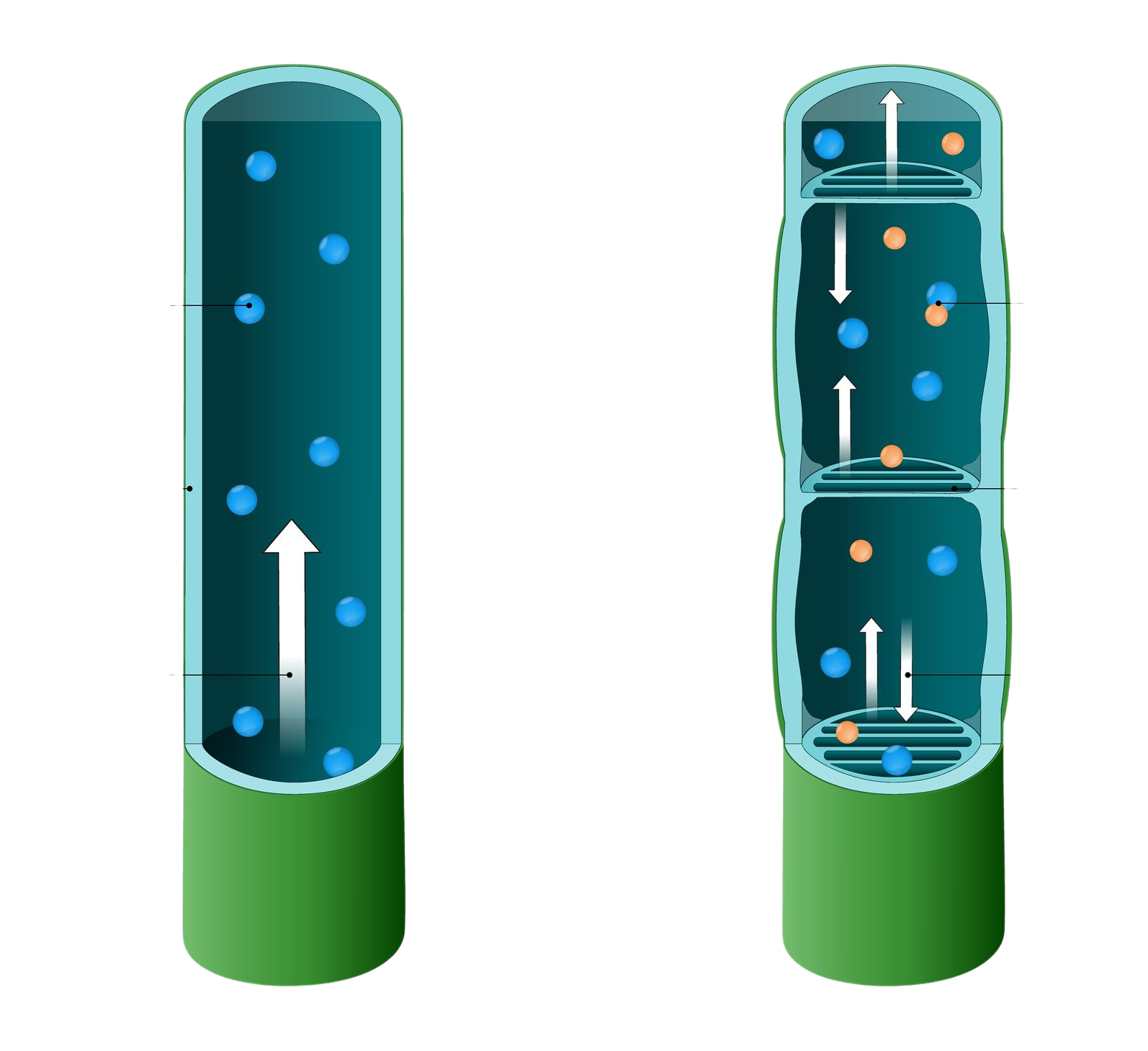How nutrients pass from soil to plant roots
Created: ·
Justin McLemore
Inspiration
- I was at a plant nursery and looked at a plant in the soil during a rain storm. It made me wonder about the mechanisms of nutrient transfer.
My guess before digging in
I’m guessing that this has something to do with osmosis or diffusion and the concentration on certain molecules or compounds in the plant roots versus in the wet soil around the roots.
Findings
- Once mineral nutrients are dissolved in soil water, they move into root cells by osmosis. Sap, which is the dilute solution of mineral nutrients in water, moves across root tissue from cell to cell and up through xylem vessels
- Leaves can also absorb nutrients, not just roots.
- Plants have a symbiotic relationship with mycorrhizal fungi. They live within the plant or in the soil and help roots take up mineral nutrients more efficiently, acting as an extension to the root network.
- Source
Etymology
- Xylem
- “woody tissue in higher plants”
- From the Greek xylon for “wood”
- That would make “xylophone” mean “wood” and “sound”
- Phloem
- “cells and fibers forming the softer, bast portion of a vascular bundle”
- From German phloëm from the Greek phloos, phloios “bark of trees, rind, skin of a fruit”
- Vessels
- The same as the standard word vessel. There’s no special meaning here in the context of botany. I thought it might relate to vesicles in cell biology
Follow-up questions
What were the two pathways in plants that move things around?
- Plant transport tissues: Xylem and phloem
- Xylem
- The xylem transports water and minerals upwards from the roots up the plant stem and into the leaves. Most of the cells that make up the xylem are specialised cells called vessels
- Vessels lose their end walls so the xylem forms a continuous, hollow tube. They become strengthened by a chemical called lignin. The cells are no longer alive. Lignin gives strength and support to the plant. We call lignified cells wood
- Transport in the xylem is a physical process and doesn’t require energy
- Phloem
- The phloem moves food substances that the plant has produced by photosynthesis to where they are needed for processes like growth, storage organs and seed development
- Transport in the phloem is up and down the stem. Transport of substances in the phloem is calls translocation
- Phloem consists of living cells
- Sieve tubes are specialised cells for transport and have no nuclei
- Companion cells provide the energy that the phloem requires to transport substances
These posts and spreadsheets are free to use, tweak, and make your own. I built them to organize my own chaos and figured they might help someone else too.
If you find value in them and want to support the time I spend creating and updating these resources, feel free to buy me a tea. It helps fuel the next round of nerdery.

